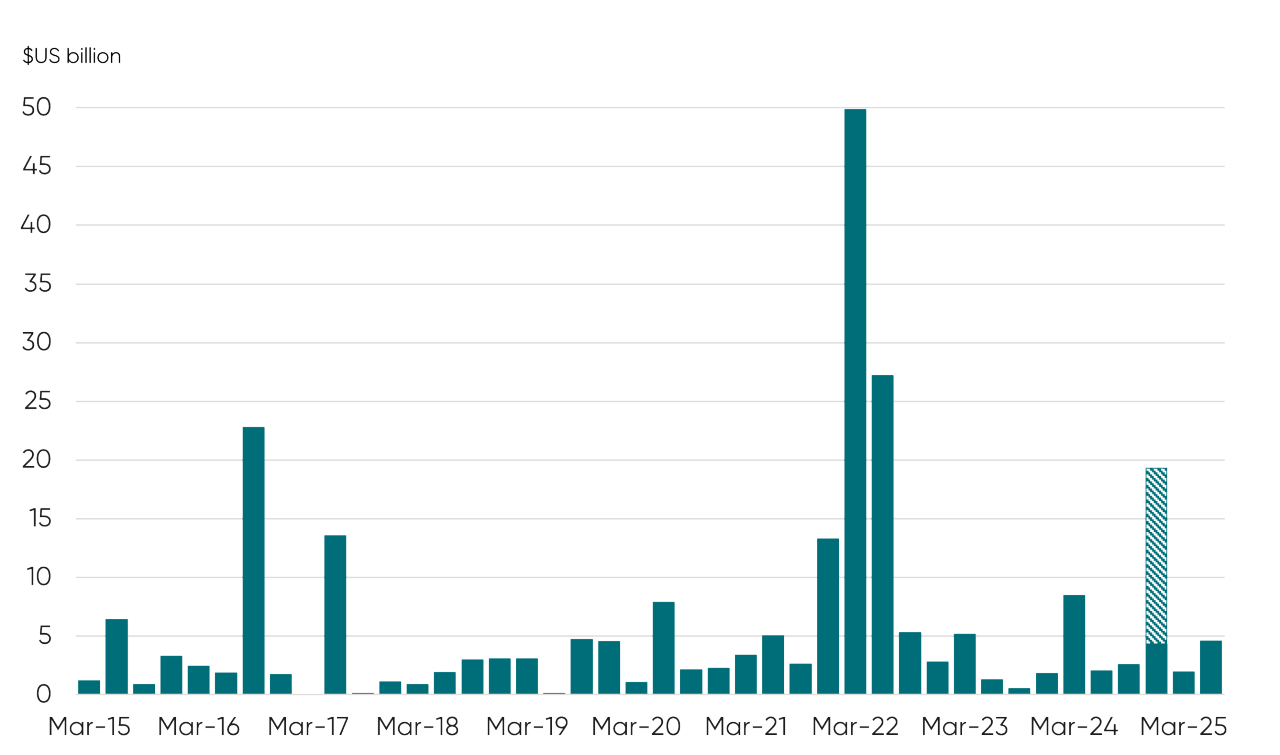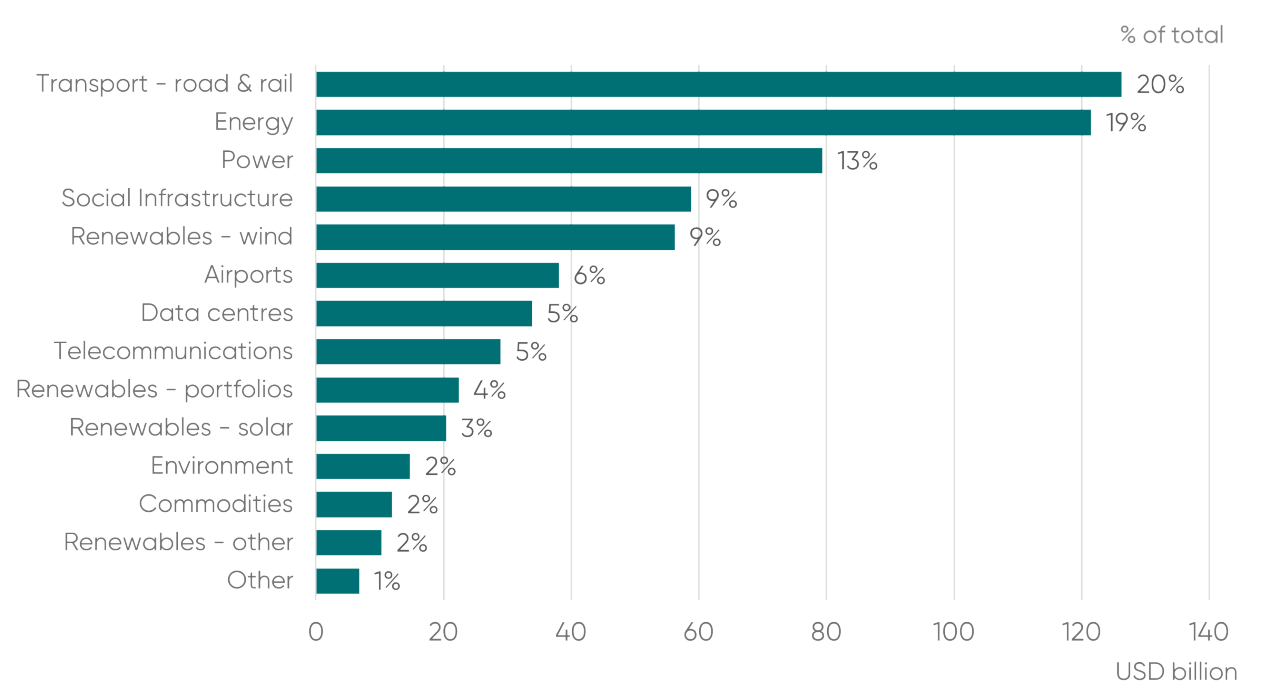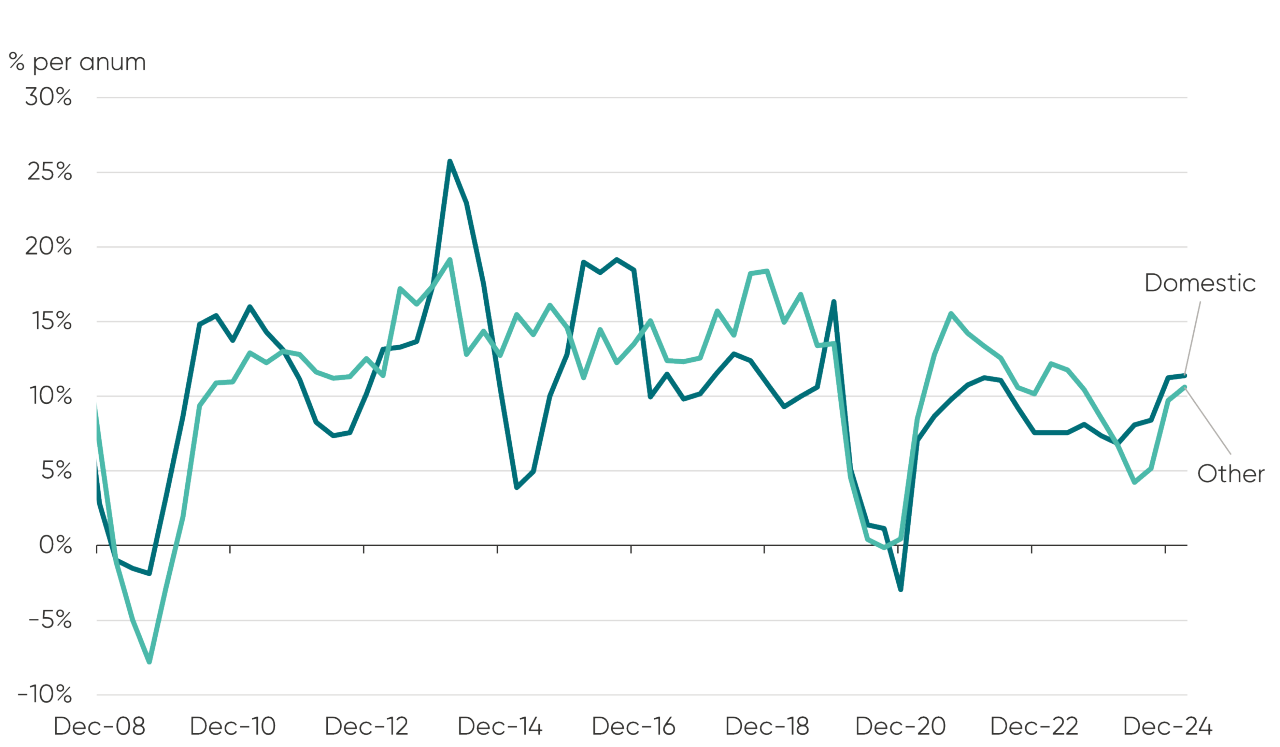
The 25 Martin Place precinct has cemented its status as a cultural and commercial powerhouse in Sydney’s CBD, with Theatre Royal Sydney surpassing one million ticket sales since reopening in 2021.
Welcome to "Corporate"
You are now viewing the main section of our website.
To switch to Leasing or Investing, use the menu above.

This quarter, Australia’s infrastructure investment landscape continues to demonstrate resilience and strategic appeal, underpinned by a stabilising macroeconomic environment, improving deal flow, and a sharpened national focus on energy transition and transport connectivity. The latest Dexus Australian Real Asset Review Q3 2025 reveals a sector navigating global uncertainty with confidence, supported by strong fundamentals and a deepening pipeline of public and private capital commitments.
The macroeconomic backdrop is increasingly supportive of infrastructure investment. Real GDP grew by 1.3% in the year to Q1 2025 and is forecast to accelerate to 2.0% by mid-2026.
Employment growth remains robust at 2.3% p.a., with the unemployment rate steady at 4.2%. The inflation rate has eased to 2.1%, and the Reserve Bank cut the cash rate by 25bps in August to 3.60%, with further reductions expected.
The 10-year government bond yield, currently 4.2% is expected to tighten in response to falling cash rates, improving the relative attractiveness of long-duration infrastructure assets and enhancing the appeal of cash flows.
Business investment, which was relatively flat over the past year, is forecast to rebound to 3.0% growth in FY26. This recovery, coupled with political continuity following the re-election of the Labor government, provides a stable platform for infrastructure deployment.
Transaction volumes in infrastructure appear to be improving despite geopolitical uncertainty with deal flow continuing to reflect disciplined capital deployment and long-term conviction. Deal flow more than doubled in the year to June 2025 and even when the large Airtrunk transaction is stripped out, the increase was a solid 4.4% across 41 M&A transactions.

Notably, the energy sector is attracting significant capital. Over the past five years renewable energy projects comprised 17% of infrastructure transactions (all types including M&A). Major recent transactions included Sojitz Corporation’s US$151 million acquisition of Capella Capital and continued investment in Western Downs BESS 2 underscoring the sector’s international appeal and the growing role of energy storage in infrastructure portfolios.
On this point, Battery Energy Storage Systems (BESS) are emerging as a key investment theme. Q1 2025 was the second-best quarter on record for BESS investment, with six projects worth $2.4 billion reaching financial commitment, delivering 1.5 GW in storage capacity and 5 GWh in energy output.
South Australia led in capacity with 640 MW / 1.8 GWh, while Victoria’s Wooreen project added 350 MW / 1.4 GWh. With 69 committed storage projects in the pipeline representing 12.5 GW and 32.1 GWh, the sector is poised for strong growth.

In the Investment Monitor - March 2025 Deloitte estimated that the total value of investment projects under construction in Australia lifted by 13.6% to A$473.8 billion in the 12 months to March 2025. NSW is progressing its Metro and regional rail upgrades, Queensland is accelerating Olympic-linked projects like Cross River Rail and CopperString 2032, and Victoria continues to invest heavily in transport infrastructure.
This coordinated investment is not only stimulating construction activity but also creating opportunities in brownfield enhancements, PPPs, and energy transmission corridors.
The rising activity levels are translating into investment returns. Unlisted infrastructure delivered a strong 12.2% annual return to June 2025 (pre-fees), performing well compared to other asset classes including Australian equities (13.0%) and AREITs (14.0%) on a risk-adjusted basis.
The MSCI Australia Quarterly Private Infrastructure Index shows a three-year annualised return of 9.7%, reflecting consistent performance across transport, energy, and social infrastructure assets.

1. Energy transition acceleration
The ongoing transition to renewable energy will require large amounts of investment over an extended period. Battery storage and renewable transmission assets are attracting capital.
2. Social infrastructure and living sectors
The social infrastructure and living sectors are foundational to building inclusive, and economically vibrant societies. Health services, student accommodation and affordable housing are all undersupplied in Australia, creating exciting opportunities for investment over the next decade. Over the past 5 years deal flow in social infrastructure totalled $US 59 billion comprising 9% of the total.
3. Transport connectivity and urban mobility
Metro and rail projects are reshaping urban infrastructure, with implications for land use, productivity, and asset performance. Transport projects, including airports, remain the main stay of infrastructure activity in Australia, comprising 26% of transactions over the past five years.
4. Policy, execution and income certainty
Political stability and budget clarity are enabling long-term planning and de-risking project pipelines. Infrastructure continues to offer stable, inflation-linked returns, with low correlation to traditional asset classes.
Australia’s infrastructure market in 2025 is characterised by capital resilience and thematic alignment with sustainability and connectivity goals. With robust returns, a deepening pipeline, and increasing investor appetite for energy, transport and social assets, infrastructure remains a cornerstone of institutional portfolios.
As macro conditions stabilise and execution risk declines, we believe infrastructure is well-positioned to deliver both defensive characteristics and growth optionality in the years ahead.
Read the full report here.
Connect with us to explore investment opportunities, find the right space for your best work or learn more about what we do. Together, let’s create tomorrow.